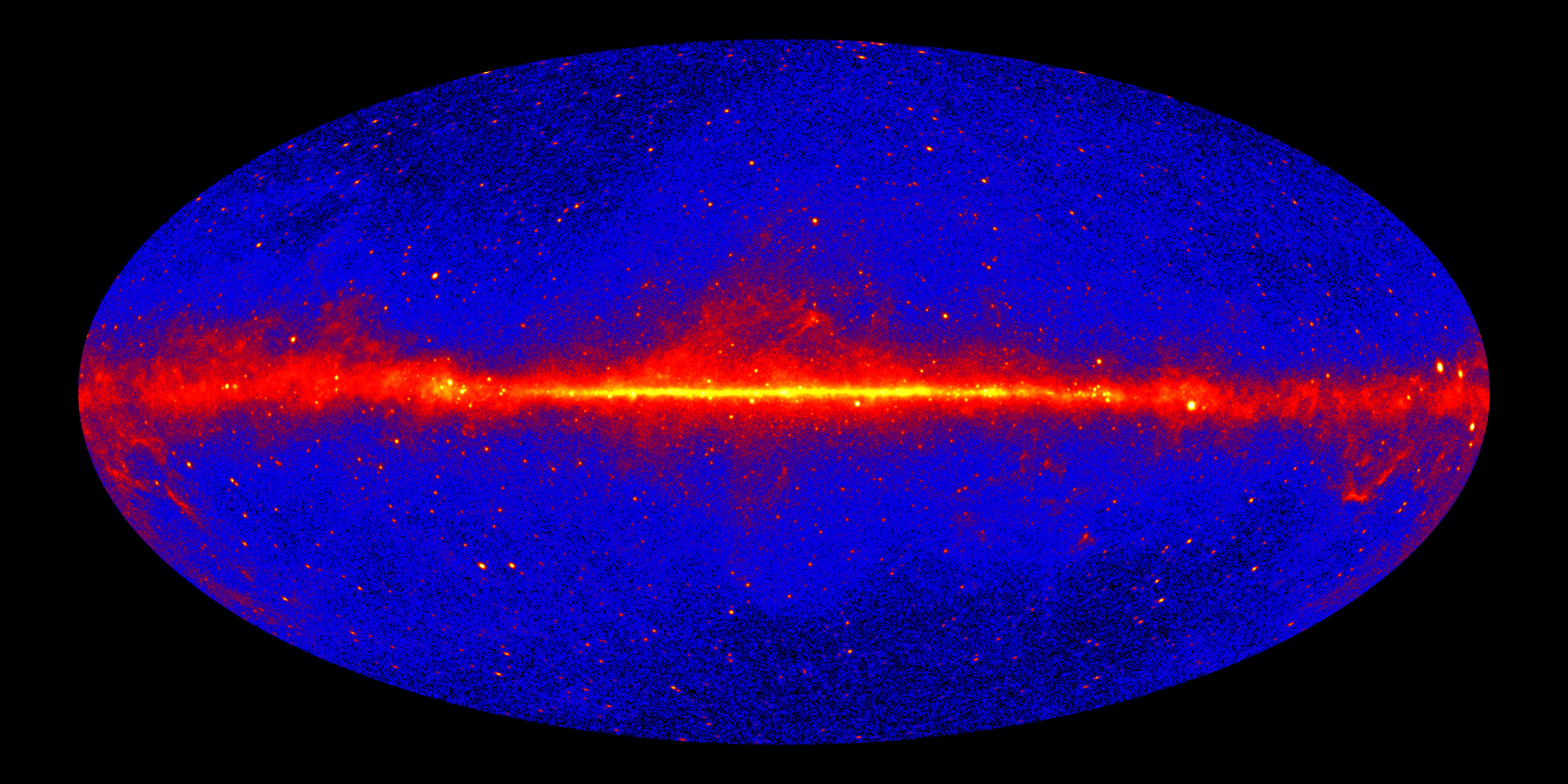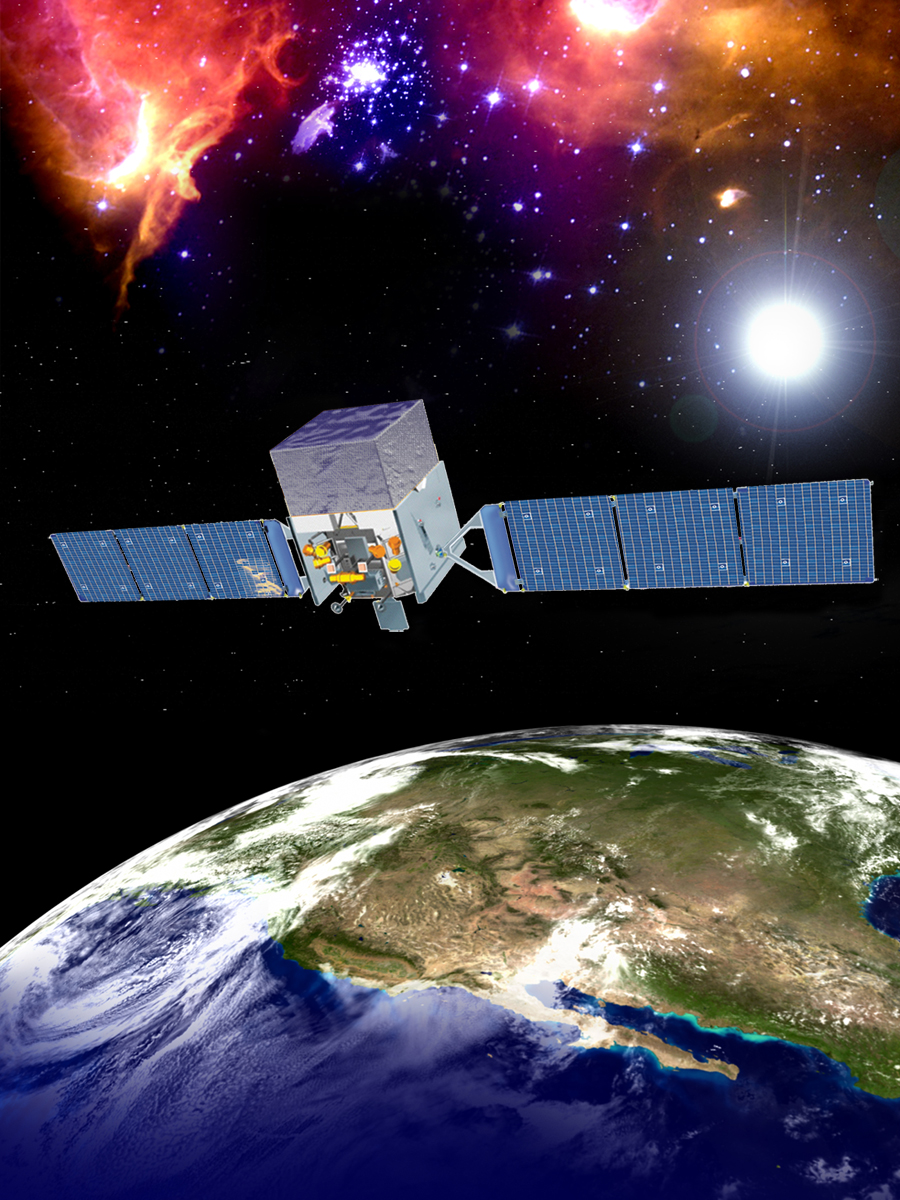NASA's Fermi Space Telescope Celebrates 10 Years of Gamma-Ray Science
Happy birthday, Fermi Gamma-ray Space Telescope! NASA's most advanced gamma-ray observatory is celebrating 10 years of scientific discoveries this week.
The $690 million spacecraft launched from Florida's Cape Canaveral Air Force Station on June 11, 2008, on a mission to study gamma-rays, the highest-energy form of light in the universe. Gamma-rays are invisible to human eyes, but telescopes like Fermi allow astronomers to "see" this type of light, which contains clues about black holes, neutron stars and other mysterious sources of high-energy radiation.
"Fermi's first 10 years have produced numerous scientific discoveries that have revolutionized our understanding of the gamma-ray universe," Paul Hertz, director of NASA's Astrophysics Division, said in a statement. [Gamma-Ray Universe: Photos by NASA's Fermi Space Telescope]

By peering at the cosmos from low Earth orbit, Fermi detected the most powerful gamma-ray blast astronomers have ever seen: a mysterious source glowing with more energy than 9,000 supernovas. Fermi also discovered the first gamma-ray pulsar and gamma-ray "bubbles" around the Milky Way.
The mission, formerly known as the Gamma-ray Large Area Space Telescope (GLAST), was named after the Italian-American physicist and Nobel laureate Enrico Fermi, who suggested in 1949 that cosmic rays (subatomic particles traveling close to the speed of light) may come from supernovas, or violent star explosions. The Fermi telescope found evidence confirming his theory by observing two supernova remnants in the Milky Way.

"Fermi has fundamentally improved our understanding of how the universe operates," David Thompson, a Fermi deputy project scientist at NASA's Goddard Space Flight Center in Greenbelt, Maryland, said in the statement. "This spacecraft has both provided evidence for long-cherished theories and has also forced the scientific community to reevaluate some of its assumptions."
After the observatory's initial five-year study, NASA opted to extend the Fermi telescope's mission for an additional five years. The telescope's extended mission is scheduled to end this fall.
Get the Space.com Newsletter
Breaking space news, the latest updates on rocket launches, skywatching events and more!
Email Hanneke Weitering at hweitering@space.com or follow her @hannekescience. Follow us @Spacedotcom, Facebook and Google+. Original article on Space.com.
Join our Space Forums to keep talking space on the latest missions, night sky and more! And if you have a news tip, correction or comment, let us know at: community@space.com.

Hanneke Weitering is a multimedia journalist in the Pacific Northwest reporting on the future of aviation at FutureFlight.aero and Aviation International News and was previously the Editor for Spaceflight and Astronomy news here at Space.com. As an editor with over 10 years of experience in science journalism she has previously written for Scholastic Classroom Magazines, MedPage Today and The Joint Institute for Computational Sciences at Oak Ridge National Laboratory. After studying physics at the University of Tennessee in her hometown of Knoxville, she earned her graduate degree in Science, Health and Environmental Reporting (SHERP) from New York University. Hanneke joined the Space.com team in 2016 as a staff writer and producer, covering topics including spaceflight and astronomy. She currently lives in Seattle, home of the Space Needle, with her cat and two snakes. In her spare time, Hanneke enjoys exploring the Rocky Mountains, basking in nature and looking for dark skies to gaze at the cosmos.









